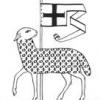{ -1.0f, -1.0f, 0.0f, D3DCOLOR_XRGB(0, 255, 0), },
{ -1.0f, 1.0f,-1.0f, D3DCOLOR_XRGB(0, 0, 255), },
{ 1.0f, 1.0f, 0.0f, D3DCOLOR_XRGB(255, 0, 0), },
{ 1.0f, -1.0f, -1.0f, D3DCOLOR_XRGB(0, 0, 255), },
dx9 tutorial help
Is this a thread for the 'Announcements' section? Or are you asking us how you might go about drawing 20 pyramids to the screen?
Stitchs.
I want to know how to draw 20 triangular pyramids to the screen
Repeat the code for 1 pyramids 20 times, but of set each one by x (otherwise they will be drawn on top of each other)?
Use a for-loop where for each increment, you change the coordinates so that each pyramid is drawn at a certain distance away from the last. This will put them into a single row or column of pyrmaids.
If you wanted a pattern, try using a second for-loop nested in your first. The first can move the pyramids along the X-axis, then the second moves them on the Y-axis. This results in, for example. five triangles being drawn in a column, inner loop exits to outer loop, column start moves to the right. This is repeated until you have 20 drawn on the screen, in 4 columns of 5 pyramids.
Regards,
Stitchs.
{ x, -x, 0.0f, D3DCOLOR_XRGB(0, 255, 0), },
{ -x, x,-1.0f, D3DCOLOR_XRGB(0, 0, 255), },
{ x, x, 0.0f, D3DCOLOR_XRGB(255, 0, 0), },
{ x, -x, -1.0f, D3DCOLOR_XRGB(0, 0, 255), },
am I on the right track with this code
{ x, -x, 0.0f, D3DCOLOR_XRGB(0, 255, 0), }, { -x, x,-1.0f, D3DCOLOR_XRGB(0, 0, 255), }, { x, x, 0.0f, D3DCOLOR_XRGB(255, 0, 0), }, { x, -x, -1.0f, D3DCOLOR_XRGB(0, 0, 255), },
Well,yes and no, the first 3 floats are X,Y and Z (i assume, sorry), this (im pretty sure) will create them in a diagonal pattern
for(float i; i <= (20*32); i+=32.0f){
...
{ -i, -1.0f, 0.0f,d3dcolor_xrgb(0,255,0),}
....
}
the loop increases by 32 each itteration, thus, the spacing between the pyramid will be 32px on the x axis
bare in mind its only an example :)
hopw that helps
You'll want to create a static model of your pyramid. That means no variables in the pyramid declaration. Once that's done you use a transform to place the pyramid where you want to render it in the world.
This process is described in lesson 5 on the site you're using.





